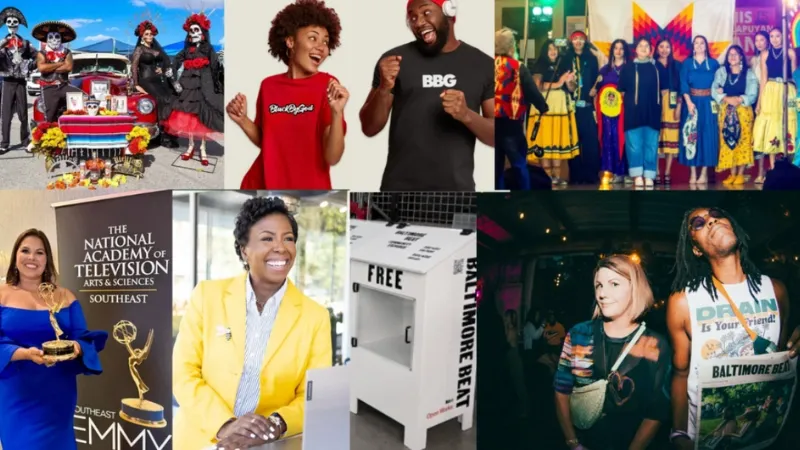News
How Pivot Fund Grantees Are Building Sustainability
July 29, 2025

Turning cultural trust into revenue takes building the right internal capacity.
Across the country, community-centered newsrooms are navigating a tough balancing act: staying rooted in the people they serve while trying to build revenue models that last. At The Pivot Fund, we’ve been checking in with our grantees—newsrooms led by and for communities long overlooked by traditional media—and asking: What’s working? What’s evolving? What’s still hard?
What we’ve learned is relevant far beyond our grantee circle. If you’re running an immigrant-centered outlet, a Black-led newsroom, or a rural publication, you’re likely wrestling with the same questions: How do we grow revenue without compromising our mission? How do we turn cultural trust into financial support?
Here’s the short answer:
You need the internal capacity to grow. Just as essential as being rooted in community is having the right team in place—people who can turn that trust into real, recurring revenue.
Capacity is the Difference
Take Underscore Native News. Early support from The Pivot Fund helped raise their visibility, opening the door to multi-year funding from national and local funders. But the real shift came when a transformational Pivot grant enabled them to hire key staff: an audience engagement manager to connect content with membership revenue, and their first Indigenous managing editor to strengthen editorial leadership and free up the executive director to focus on major gifts.
The result? A $20,000 individual gift—their largest yet—and a leap from a modest operating budget to $1 million-plus in 2026.
“For the first time, I’m not the point person on our year-end fundraising,” said Myers Reece, executive director of Underscore. “That’s huge. We now have the staff and systems to carry it.”
As Pivot’s Assistant Director of Research Eric Ortiz puts it:
“They didn’t just hire a development director. They invested in community engagement and audience. That’s what unlocked revenue.”
Engagement is Revenue—If You Have the Right People
We see this across the board. BeeTV is producing high-impact, community-driven livestreams from local restaurants and businesses. Engagement is high. But without someone focused on sales or donor cultivation, the outlet hasn’t been able to consistently translate that attention into revenue.
The opportunity is there—but you need a team to catch it.
That also means recognizing the value of what you’re already doing. Black By God’s Black business directory and travel guide could support local advertising and sponsored content. NotiVisión Georgia’s Hispanic cultural festival could serve as a year-round sponsorship anchor, tying live events to ongoing editorial and community coverage.
We saw this with Pasa La Voz, too. Their events drew thousands—and vendors lined up to pay for booth space. In fact, they had to turn vendors away last year. (Though this year’s events have been dampened by increased immigration enforcement, underscoring the need for adaptable strategies.)
Sustainability Doesn’t Have to Look Traditional
Many of our most innovative grantees are blending journalism, organizing, and community power into models that build both trust and revenue.
- The Kansas City Defender is transforming a historic Black-owned bookstore into a community hub and mutual aid space.
- Mississippi Free Press delivers deep regional coverage rooted in community voice.
- Baltimore Beat’s print edition, distributed citywide, pays for itself—and reaches people beyond digital.
But even these powerful models hinge on one thing: capacity.
The Defender hired both a Director of Development and a Senior Editor with Pivot support, freeing up its founder to pursue transformational projects like the bookstore purchase. Baltimore Beat brought on a managing editor, allowing its founder and CFO to focus on growth.
Someone has to coordinate the boxes. Plan the events. Pitch the sponsors. Engage the community. Follow up with funders.
The Takeaway: Build the Team That Builds the Business
That might mean hiring an audience engagement lead instead of a traditional development officer. Or bringing in someone to manage events, not just editorial.
Sustainability isn’t just about money—it’s about structure. As you test new revenue ideas—WhatsApp newsletters, community ambassador programs, local perks, pop-up markets—ask: Do I have the right people to execute this well?
Because that’s what it takes to move from survival to regeneration. Revenue isn’t just income. For community publishers, it’s about control.
The more sustainable your model, the more freedom you have to cover what matters most.
Hire the right people. Build the right systems. And give yourself the space to grow.